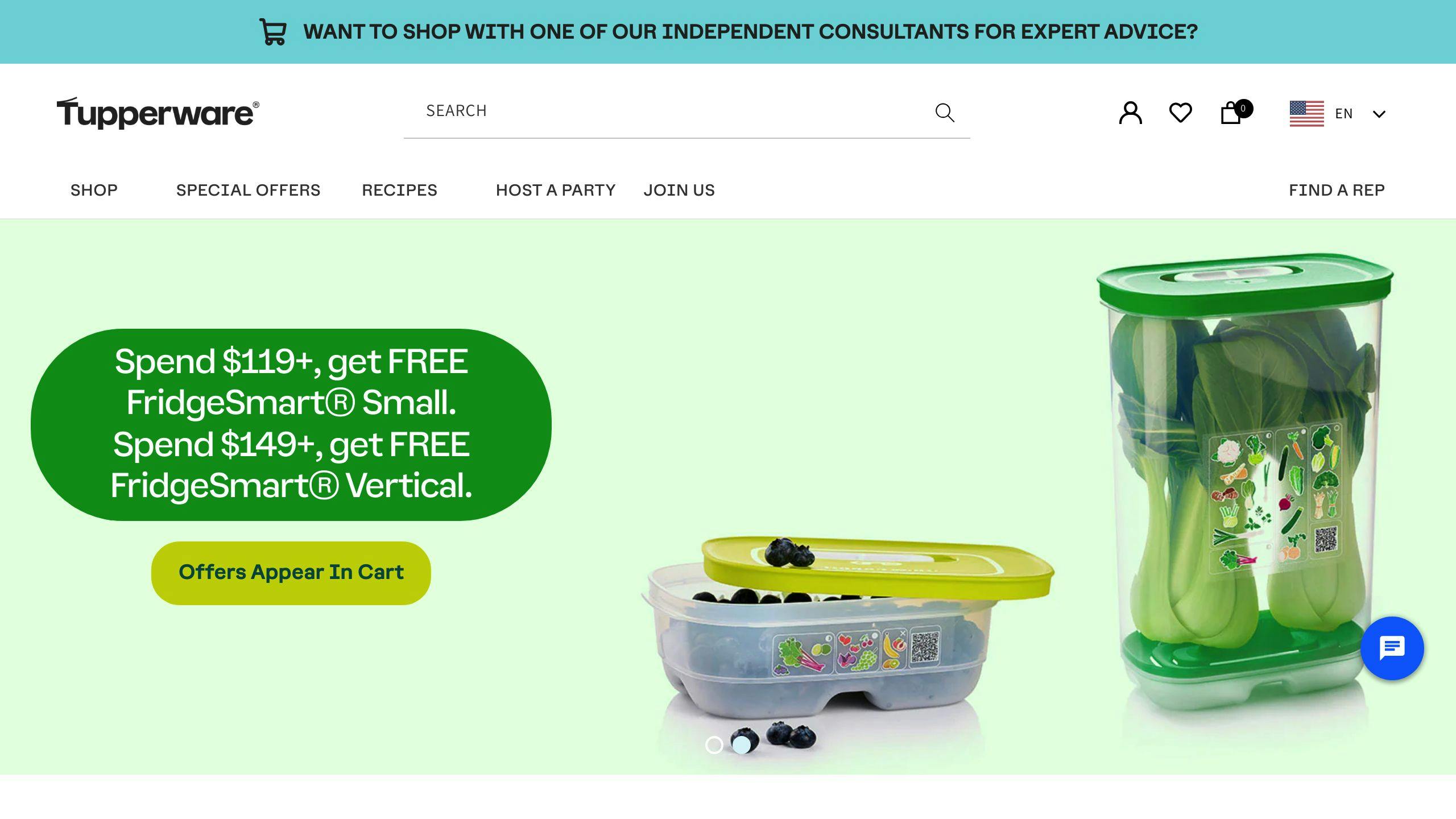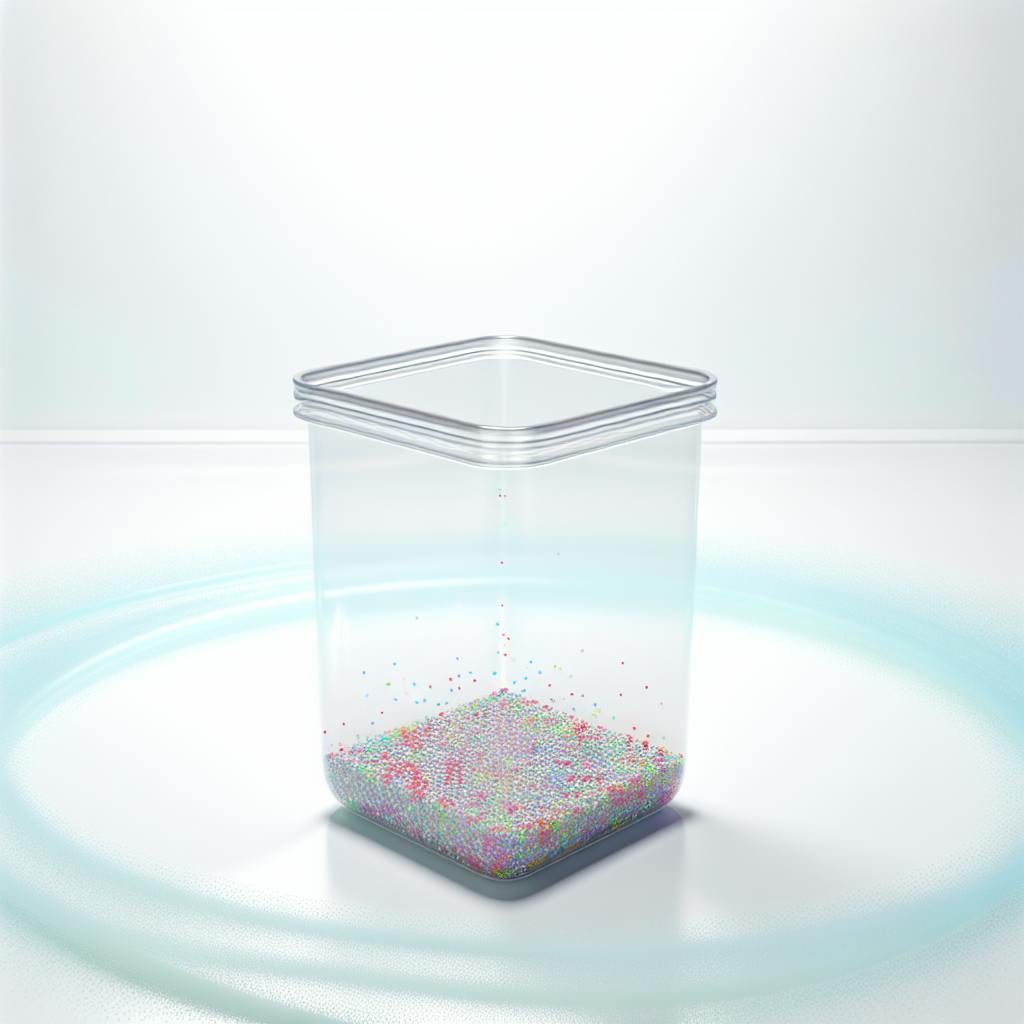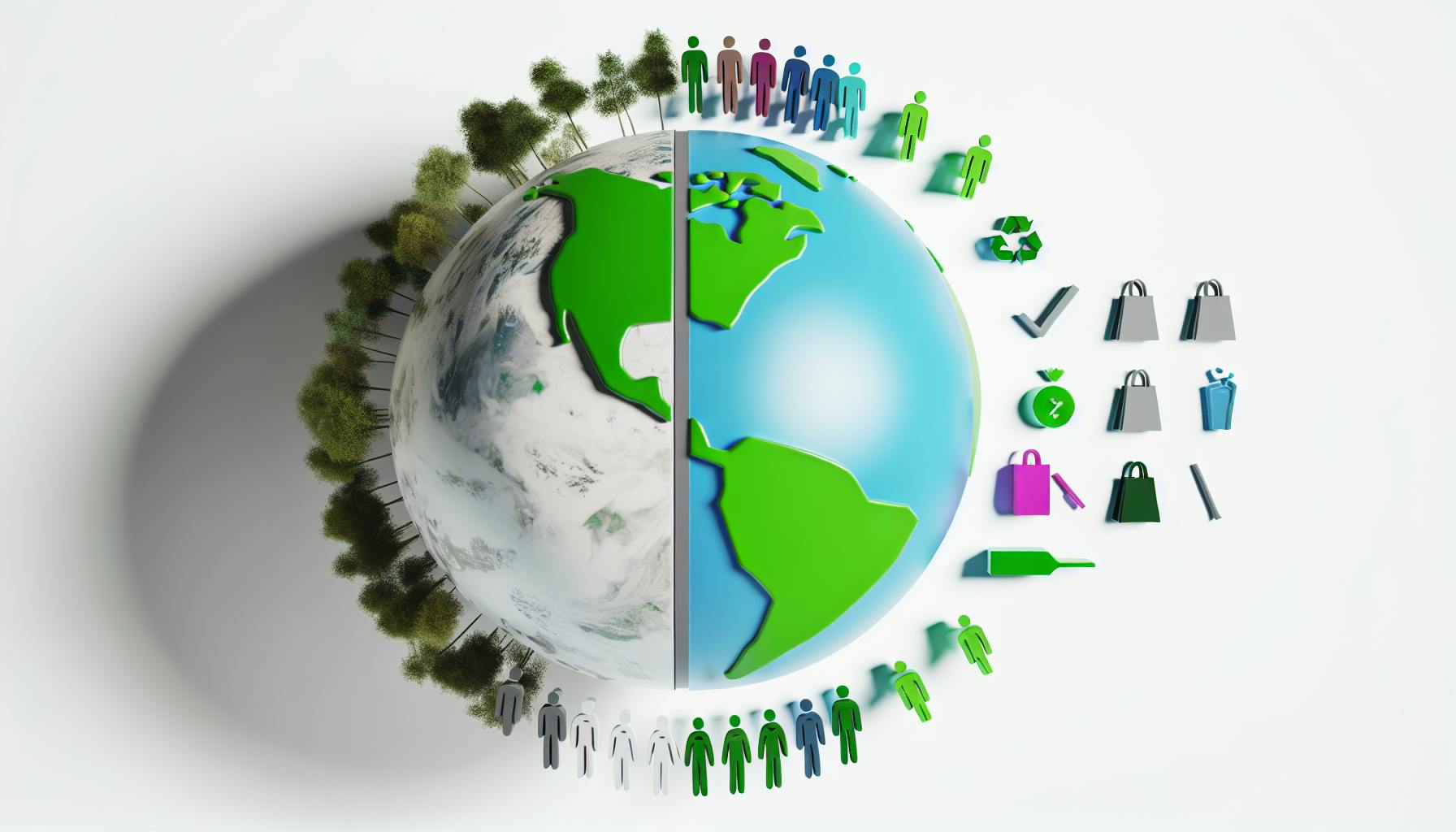Here's how to minimize microplastic exposure from food containers:
- Choose glass, ceramic, or metal containers over plastic
- If using plastic, opt for BPA-free and microwave-safe options
- Avoid heating food in plastic containers
- Replace scratched or damaged containers
- Clean containers gently by hand
- Let hot food cool before storing in plastic
- Recycle old containers properly
Quick comparison of food storage options:
| Material | Microplastic Risk | Heat Safe | Durability | Cost |
|---|---|---|---|---|
| Glass | None | High | High | Medium |
| Ceramic | None | High | Medium | Medium |
| Stainless Steel | None | Medium | High | High |
| Plastic | Medium | Low | Medium | Low |
By following these practices, you can significantly reduce your exposure to microplastics from food storage containers while still enjoying the convenience of reusable containers.
Related video from YouTube
What Are Microplastics in Food Storage?
What Are Microplastics?
Microplastics are tiny plastic bits smaller than 5mm. They come in different shapes like fibers, spheres, and odd forms. In food storage, particles between 201 to 500 µm are common.
Where Do Microplastics Come From in Food Containers?
Microplastics often come from the containers themselves. Takeaway food containers made of polypropylene (PP) are a big source. Heat and frequent use can break down plastic, leading to more microplastics. Even new containers release microplastics.
| Container Shape | Microplastic Release |
|---|---|
| Round | 12 ± 5.12 mg |
| Rectangular | 38 ± 5.29 mg |
| Disposable cups | 3 ± 1.13 mg |
Health Risks of Microplastics
While research is still ongoing, microplastics may pose these health risks:
-
Hormone Problems: At least 15 chemicals in plastic packaging can mess with hormones.
-
Long-term Health Issues: They might increase the risk of type 2 diabetes and heart disease.
-
Fertility Issues: BPA, found in many plastics, may affect fertility in men and women.
-
Immune System Effects: Microplastics might cause inflammation and weaken the immune system.
-
Organ Damage: High amounts of microplastics can harm the kidneys.
While we don't know everything about these risks yet, it's clear that microplastics in our food and environment are a growing concern.
How to Use Tupperware Safely

Here are some tips to use Tupperware safely and cut down on microplastics:
Picking the Right Containers
Check the bottom of your Tupperware for the microwave-safe symbol (squiggly lines). Not all Tupperware is safe for microwaves.
| Container Age | What to Do |
|---|---|
| Made before 2010 | Get new ones |
| Made after 2010 | Look for microwave-safe symbol |
Think about using glass or metal containers instead of plastic.
Cleaning and Maintaining Containers
To keep your Tupperware clean:
- Wash by hand right after use
- Use warm water and dish soap
- For tough stains, mix baking soda and dish soap
- Don't use rough scrubbers
For really stubborn stains:
- Mix vinegar and hot water in the container
- Add dish soap and let it sit
- Scrub with baking soda and dish soap
- Rinse well
Storing Food Safely
When putting food in Tupperware:
- Let hot food cool first
- Don't store oily foods in plastic
- Use glass for tomato sauce and other acidic foods
- Don't use damaged containers
Using Containers in Microwaves and Dishwashers
For microwaving:
- Only use microwave-safe containers
- Take off lids before heating
- Heat food in short bursts and stir
- Make sure food is hot enough (165°F or 74°C)
For dishwashing:
- Check if your Tupperware can go in the dishwasher
- Put containers on the top rack
- Washing by hand might make them last longer
| Microwave Use | Dishwasher Use |
|---|---|
| Use microwave-safe only | Check if dishwasher-safe |
| Remove lids | Place on top rack |
| Heat in intervals | Hand washing may be better |
| Ensure proper temperature |
sbb-itb-1dc3f59
Cutting Down on Plastic in the Kitchen
Using less plastic in the kitchen helps the environment. By making small changes, you can reduce plastic waste and make your kitchen safer.
Switching to Non-Plastic Options
Instead of plastic, try these materials for food storage:
| Material | Benefits | Best For |
|---|---|---|
| Glass | Strong, reusable, safe for hot food | All types of food |
| Stainless Steel | Tough, doesn't rust, lasts long | Dry goods, leftovers |
| Silicone | Flexible, light, easy to store | Snacks, small portions |
| Ceramic | Strong, handles heat well, easy to clean | Baked goods, meals |
Some good brands to try:
- Life Without Plastic: Offers glass, stainless steel, and bamboo products
- Caraway Food Storage Set: Uses ceramic-coated glass
- Kilner Jars: Glass jars good for fridge, freezer, or pantry
How to Replace Plastic Containers Over Time
You don't need to throw out all your plastic at once. Here's how to do it step by step:
- Check your containers: Replace old or worn-out ones first
- Start with the ones you use most: Focus on containers for hot foods and drinks
- Buy new ones slowly: Get non-plastic options as you can afford them
- Use old containers differently: Store non-food items in them instead of throwing away
Making Your Kitchen More Eco-Friendly
Here are more ways to use less plastic in your kitchen:
-
Use metal, wood, or bamboo utensils instead of plastic
-
Get wooden or bamboo cutting boards
-
Use beeswax wraps or silicone lids instead of plastic wrap
-
Bring cloth bags for grocery shopping
-
When buying new appliances, look for ones with less plastic
| Item to Replace | Better Option |
|---|---|
| Plastic utensils | Stainless steel or wooden spoons and spatulas |
| Plastic cutting boards | Wooden or bamboo boards |
| Plastic wrap | Beeswax wraps or silicone lids |
| Plastic grocery bags | Reusable cloth bags |
| Plastic-heavy appliances | Appliances with more metal parts |
How to Dispose of and Recycle Plastic Containers
Getting rid of plastic containers the right way helps the environment. Here's how to handle old Tupperware and other plastic food containers.
Rules for Recycling Plastic
Know what the recycling symbols on your containers mean:
| Symbol | Plastic Type | Can You Recycle It? |
|---|---|---|
| 1 (PET) | Soft drink bottles | Yes, in most places |
| 2 (HDPE) | Milk jugs, soap bottles | Yes, in most places |
| 5 (PP) | Most Tupperware | More places now take it |
| 4 (LDPE) | Cling films | Some places take it |
| 3 (PVC), 6 (PS), 7 (Other) | Various | Hard to recycle |
Always check with your local recycling center to see what they take.
Getting Containers Ready for Recycling
To make sure your plastic containers can be recycled:
- Clean them well: Take off all food bits and wash them.
- Dry them: Wet containers can mess up recycling.
- Take off lids: Unless your recycling center says to keep them on.
- Check for damage: Very old or broken containers might not be recyclable.
If containers aren't clean, it can ruin a whole batch of recycling.
Finding Places to Recycle
-
Local Recycling Centers: Use websites like RecycleNation or Earth911 to find places near you.
-
Stores: Some stores like Walmart have bins for hard plastics and food boxes.
-
Special Programs: Look for programs like TerraCycle's Rubbermaid Food Storage Recycling Program.
-
Community Events: Many towns have special days for hard-to-recycle items.
If you can't recycle, try using old containers to store non-food items or give good ones to charity.
Conclusion
Using less plastic in our daily lives is good for our health and the planet. By following the tips in this article, we can lower the amount of tiny plastic bits we come into contact with. Here's a quick recap of what you can do:
| Action | Benefit |
|---|---|
| Use glass, ceramic, or metal containers | Fewer plastic bits in food |
| Choose strong, BPA-free plastic if needed | Safer food storage |
| Avoid heating plastic | Less plastic breakdown |
| Replace scratched containers | Fewer plastic bits in food |
Small changes in your kitchen can make a big difference:
- Use beeswax wraps instead of plastic wrap
- Try silicone lids for covering dishes
- Bring reusable bags for shopping
When getting rid of old containers:
- Check local recycling rules
- Clean containers before recycling
- Take off lids if required


